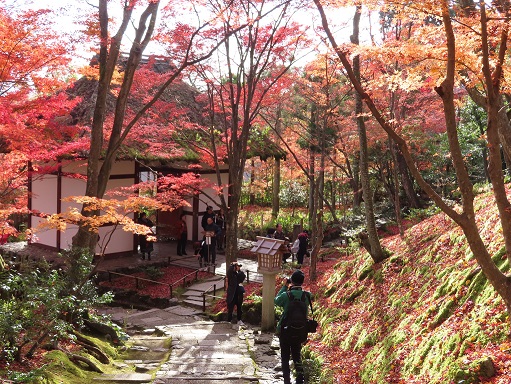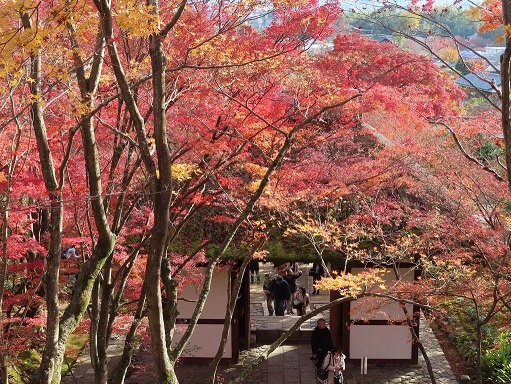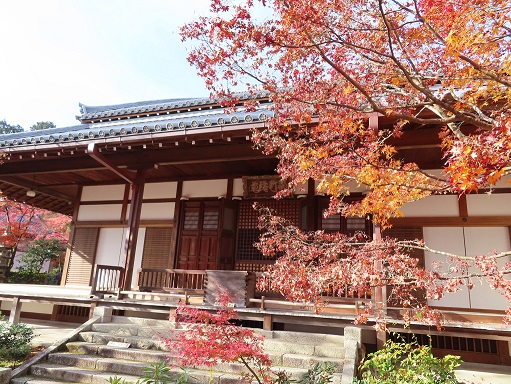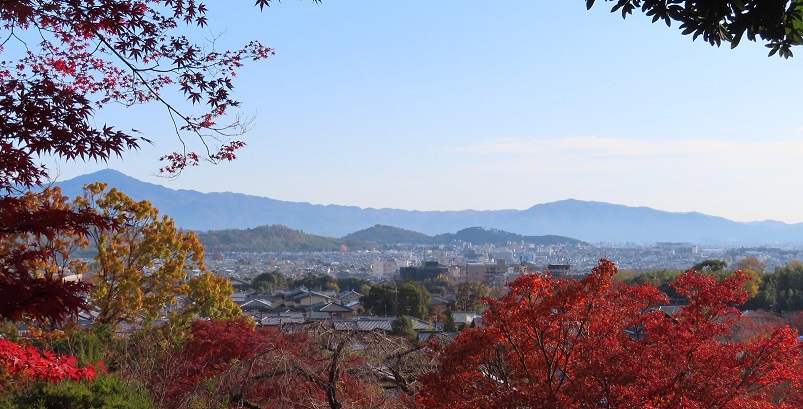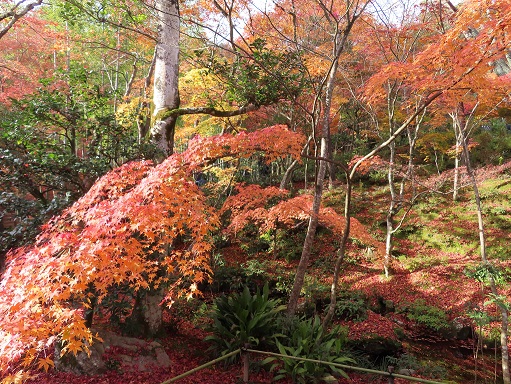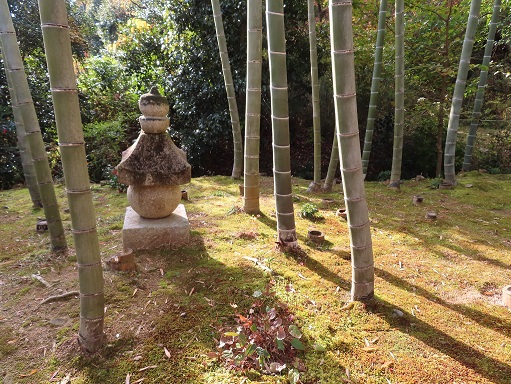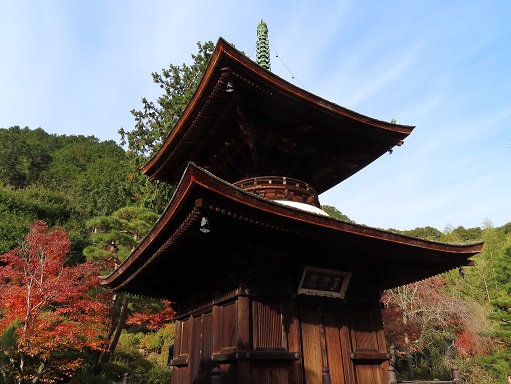|
Jojakkoji Temple in Kyoto
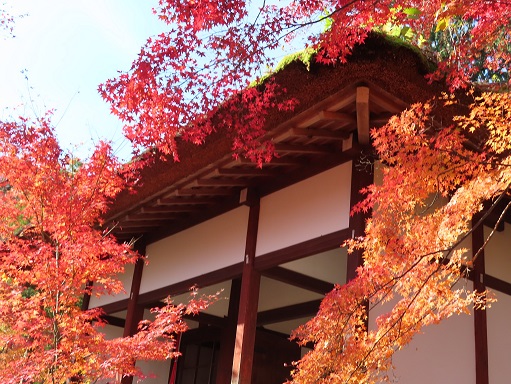
If you walk to the north from the "Bamboo Forest Path", you will arrive at Jojakkoji Temple. Please refer the page of "Sagano Area" in Kyoto: http://handejapan19.html.xdomain.jp/TravelDestinations/Kansai/Sagano_E.html Jojakkoji Temple is located at the foot of Mt. Ogura. Jojakkoji Temple belongs to the Nichiren Sect and it was founded in 1596 by Saint Nisshin (1561 - 1617). Jojakkoji Temple is a small temple, but it is very well-known for beautiful Autumn leaves.The best season for the beautiful Autumn leaves is at the end of November to the beginning of December. At the main gate of Jojakkoji Temple, the sign says the Autumn leaves are at their best. 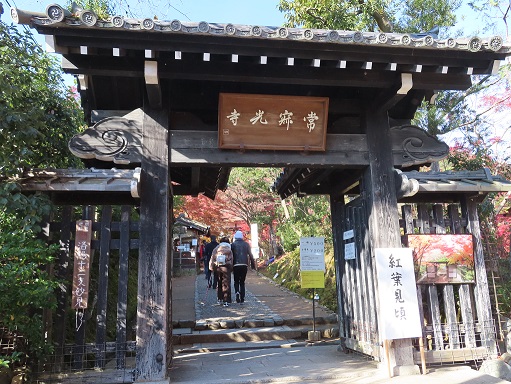
If you walk to the west from the main gate, you will see the Deva Gate. The Deva gate was originally built as the south gate of Honkokuji Temple in the middle of the fourteenth century. It was moved to Jojakkoji Temple in 1616. 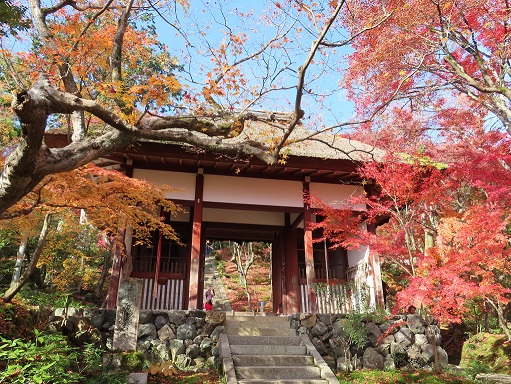
It is said that the Deva Statues in the gate were made by UNKEI (? - 1224) . Maple leaves in front of the Deva Gate are very beautiful. Many people stopped in front of the gate and took pictures of beatuful Autumn leaves. |
